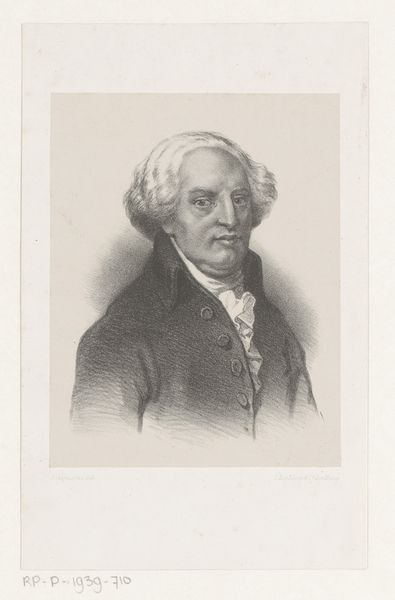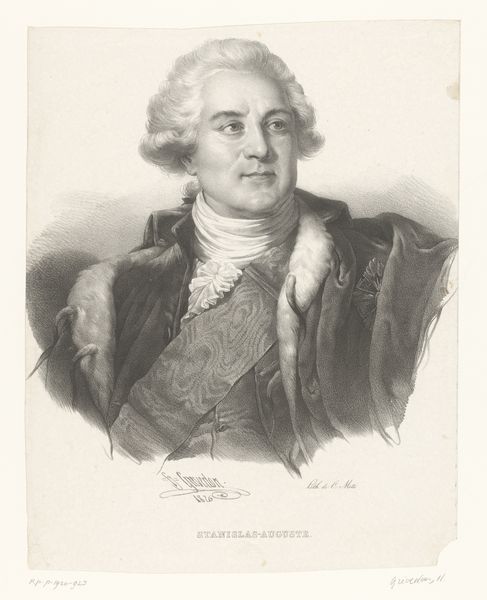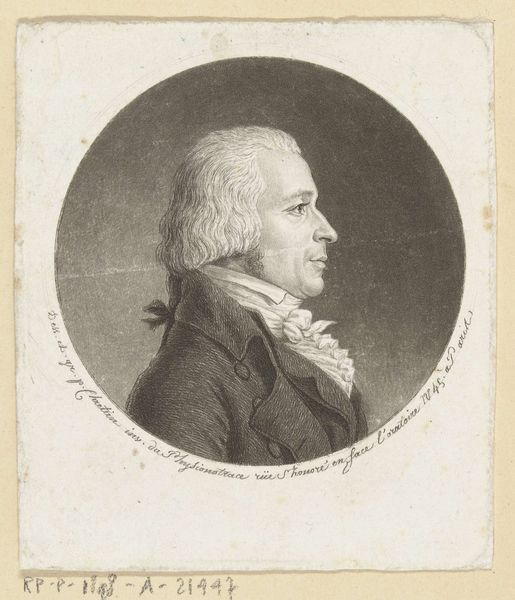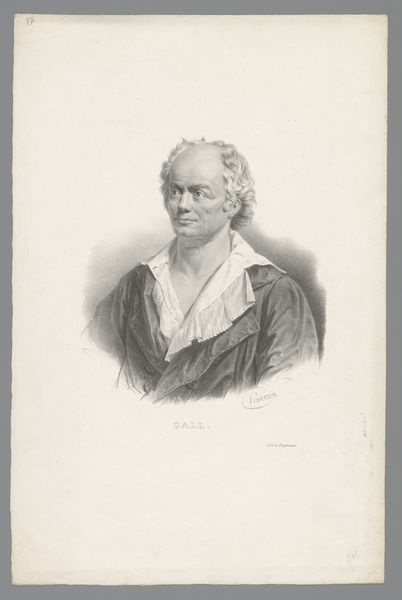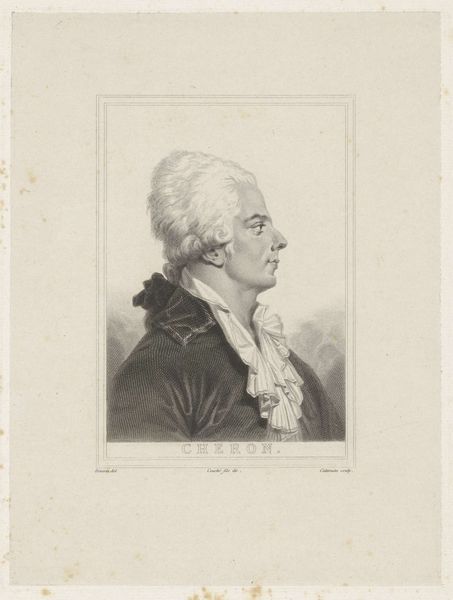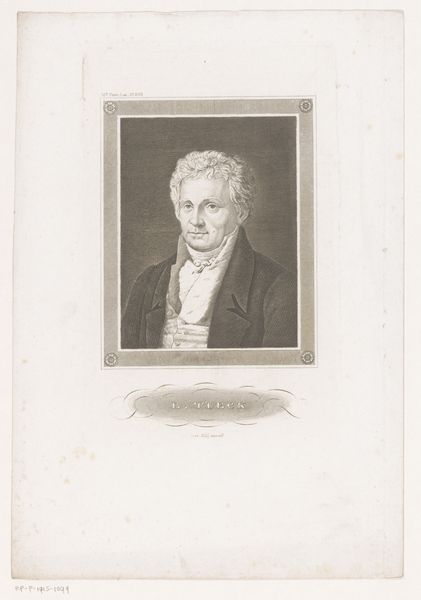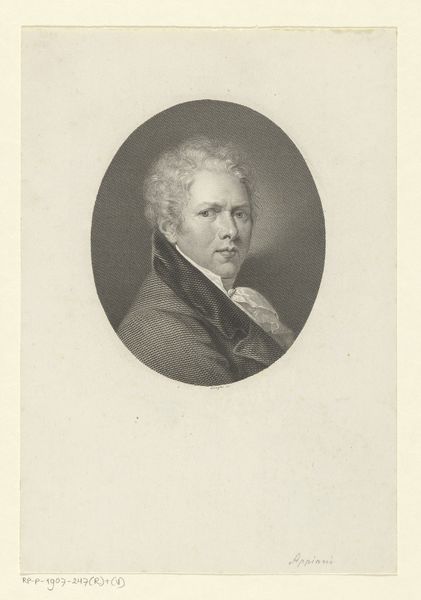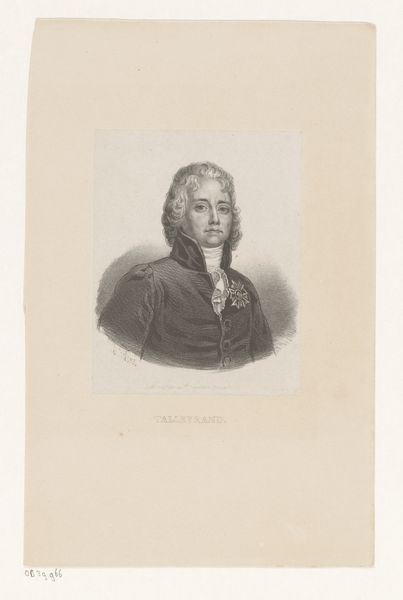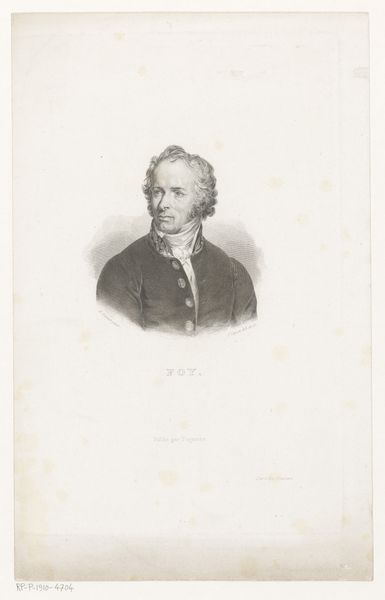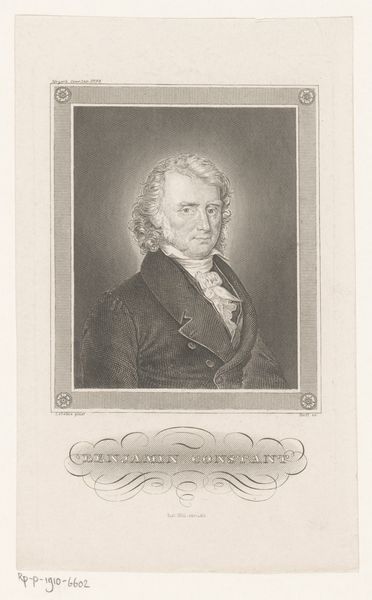
engraving
#
portrait
#
neoclacissism
#
portrait reference
#
yellow element
#
line
#
animal drawing portrait
#
portrait drawing
#
history-painting
#
engraving
Dimensions: height 177 mm, width 120 mm
Copyright: Rijks Museum: Open Domain
Curator: Here we have a print titled "Portret van Georges Jacques Danton," placing its creation sometime between 1808 and 1868. The artist identified is Carl Mayer. The artwork resides here in the Rijksmuseum, it is crafted as an engraving, and it firmly situates itself within the Neoclassical art movement. Editor: My initial reaction? Impressive, if a bit severe. There's an imposing quality to Danton, intensified by the monochromatic palette and stark lighting. It captures the gravity often associated with the figures of that era, and his serious gaze makes it almost unnerving. Curator: That severity mirrors the man himself, Georges Danton, a leading figure in the French Revolution. This portrait wasn’t produced during his life, though. These types of historical prints served a purpose beyond mere aesthetics; they shaped and solidified the public’s image of historical figures like Danton. Editor: Absolutely. And who controls the image, controls the narrative, right? Considering the revolutionary context and Danton's own trajectory – from revolutionary firebrand to ultimately being executed – the control over that historical portrayal becomes immensely significant. It either perpetuates or questions existing power dynamics, in this case during the periods following the actual Revolution itself. How was he viewed during the periods this piece was produced? Was the subject an attempt to sanitize his controversial past, or even reclaim the radical ideas from his time? Curator: Historians debate that, some emphasizing his role as a moderate later in the Revolution and others critiquing him as opportunistic. Either way, it speaks to the complexities of portraying someone who played such a pivotal and divisive role. Note the details, the strong jawline, the powdered wig. Editor: Details indeed. Notice, though, how the sharp, clean lines give him almost an idealized look. It echoes classical sculpture. Despite being a revolutionary, the composition is very much aligned with traditional power structures in portraiture, even conveying an air of respectability or even reverence. The format betrays a specific message beyond a desire to reflect simple individual likeness. Curator: Exactly. By situating him within a Neoclassical framework, the portrait elevates Danton to the level of historical greatness. Editor: For me, the piece makes me ponder how our contemporary view of revolutionaries is affected by past, sometimes sanitized and ultimately controlled, artistic representation, don't you think? Curator: It's a sobering reminder that art, even in its seemingly straightforward forms, can be deeply entwined with politics and legacy-building. Editor: Right, the layering of historical memory... heavy!
Comments
No comments
Be the first to comment and join the conversation on the ultimate creative platform.
